Click here to ENTER Mason County Michigan
Not a pe ka gon as this area was called translates as "River with heads on sticks."This was the name given to the area by the Ottawa Indians after a fierce battle between the Ottawa and Mascouten in the 17th century in which several thousand were killed. The victors then went about the task of severing the heads of the defeated Mascouten and placed them on sticks along the river and lake as a warning to all who might come afterwards.
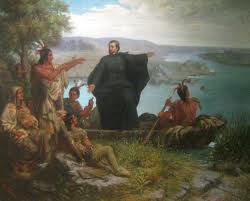 The next event of any historical nature involves Father Marquette. He was a Jesuit Missionary who travelled also by canoe through out the Great Lakes to bring Christianity to the new world. On his way back to St Ignace he became ill and passed away on the shores of the lake that would eventually bear his name.
The next event of any historical nature involves Father Marquette. He was a Jesuit Missionary who travelled also by canoe through out the Great Lakes to bring Christianity to the new world. On his way back to St Ignace he became ill and passed away on the shores of the lake that would eventually bear his name.
Early Trappers and Shingle makers made their way into the area by the lake route as early as 1835 with William Quevillion leading the way. They arrived in small schooners and travelled by canoe. Burr Caswell was the first permanent settler of European Descent to arrive in 1847 with his family aboard the Schooner Eagle.
The arrival of Burr Caswell and his family in 1847 marked the beginning of the settlement of the area and of our recorded maritime history. When Burr Caswell arrived the area was a virtual wilderness, giant pines crowded the shores of the lake, wolves wee common and travel was hard. There were no roads to bring travelers to the new settlement that would begin to develop in the midst of the wilderness.
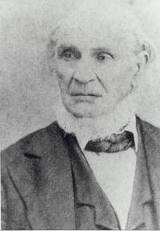
The only sure way to travel was by boat, whether it was by schooner or canoe. The alternative was to travel Indian paths and deer runs, or along the beach where each river and creek had to be crossed in some fashion.In describing what met the family on their arrival we quote from the 1882 edition of the History of Manistee Mason and Oceana Counties "Nothing could be wilder and more uncivilized then the surroundings of the first family of white settlers.
Their home was in the midst of dense wilderness, their neighbors a tribe of Ottawa Indians. There were two or three white men at work up the river [making shingles] but there were no white settlers nearer then Manistee. The Indians introduced Mr. Caswell to the mysteries of their religious rites."
Sand Sawdust and Sawlogs by Frances Caswell Hanna relates the story of their arrival here in 1847. "On a balmy day in the late summer of 1847, The Eagle, a sailing schooner northbound from Chicago, with a family of six aboard, stood off the entrance to Pere Marquette Lake.

Unable to sail through the shallow channel, the captain sent the family ashore in the yawl. Their oxen, cows, and pigs were forced overboard, and after circling the schooner once or twice, swam ashore.
A year's provisions for the family were brought to land in row boats. Such was the dramatic arrival of the Burr Caswell family, first permanent white settlers in the region about Pere Marquette Lake. Burr was forty years old, his wife, Hannah Green, a year or two younger. Of their four children, Mary was fifteen, George thirteen, Helen ten, and Edgar seven."
The history of the carferries in Ludington begins much earlier then the completion of the first steel hulled carferry in 1897. Much work by many hands had to be accomplished in the early years of settlement in order to make that event possible. The tiny village that began to form up around the saw-mills and crude buildings became known as the Village of Pere Marquette.
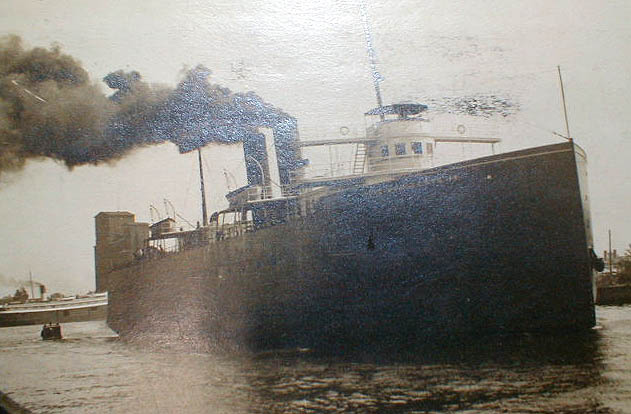
The railroad even which had begun to extend from Flint Michigan towards the east coast of the state was incorporated as the Flint & Pere Marquette. It was the railroad which terminated in Ludington that chartered the first break bulk ship to move goods for the railroad and solidified the need for an ever expanding fleet of boats, eventually creating the largest fleet of carferries in the world.
Quoting from the pages of "Lumber Lath and Shingles" as written by Luman Goodenough. "Lumber was the reason for the existence of the town. The mills scattered along the banks of the little lake were the means. A lake area two miles in length by half or three quarters of a mile in width afforded ample shore space for all the timber industries the adjacent forests could support or the river float in logs and bolts. " The development of the Maritime Industry in Ludington was directly related to the need to move goods to market and to move settlers and lumberjacks in search of work to remote areas that could only be easily accessible by water.
This is how the original trade and shipping routes wee established and the continued need for bigger and better ships to carry both freight and passengers year around across the lake.
Trappers arrived as early as 1835, shingle makers by the 1840's and the first permanent settler in 1847. Change was happening but by today's standards it was coming slowly to the region. Traveling overland was difficult as roads were non existent in Northern Michigan at the time. 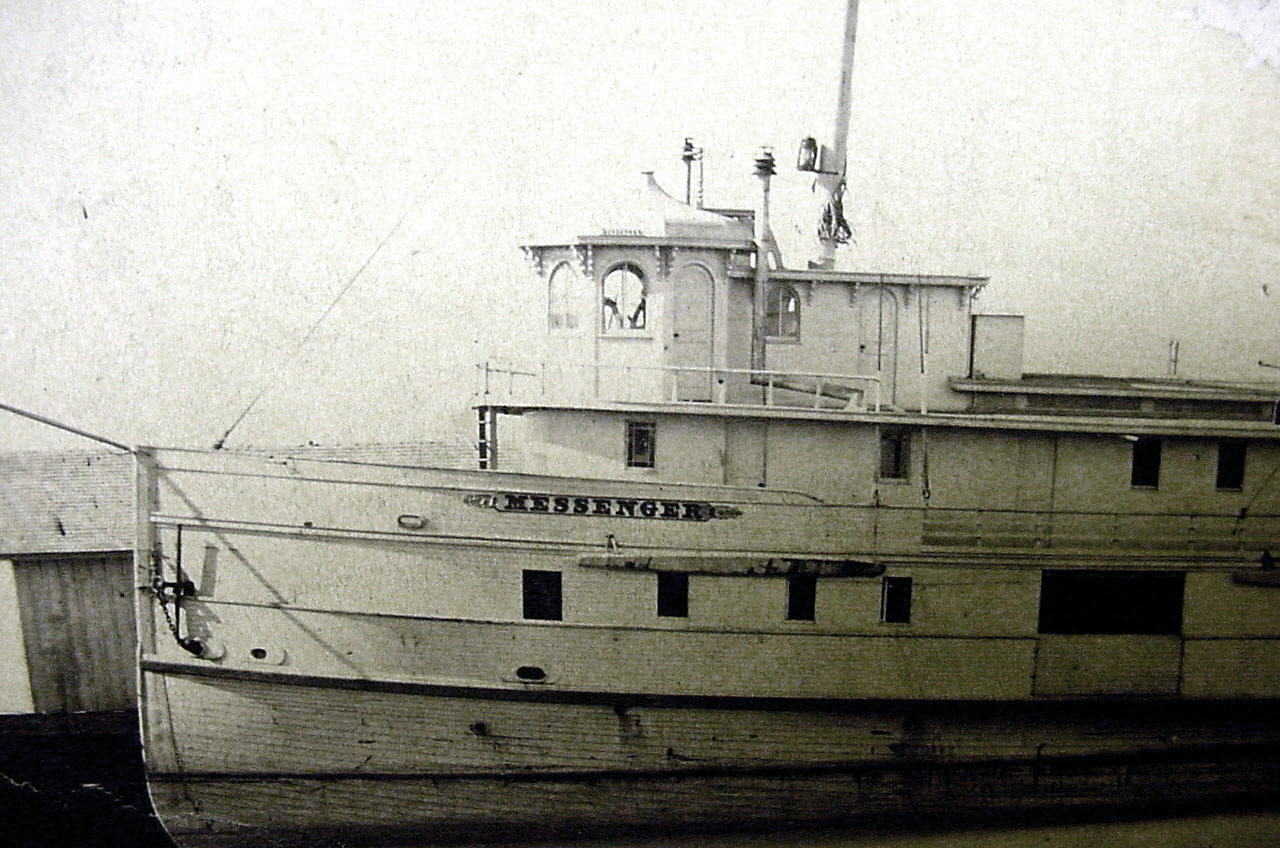
The most efficient form of travel was by boat and as lumbermen began to come into the area the need was great to find a way to quickly move timber, supplies and people. Large tracts of pinelands were being bought by men who had the vision to see the need and the future market for the seemingly unlimited pine forests. There were millions to be made for those willing to take the gamble and lives to be forged for immigrants willing to work long hours in the Pinery.
Schooners and lumber hookers provided most of the transportation needs in those early years up to about 1865. Population growth was slow and although it seemed that the lumbering concerns were moving a mountain of pine they had in reality barely scratched the surface. Even by 1873 Mammoth White Pines crowded the shores of Pere Marquette Lake.
A man by the name of Ford purchased the land surrounding Pere Marquette Lake to establish a sawmill and had taken out a note with James Ludington a Milwaukee businessman to fund the construction and early operation of this enterprise. Around the same time another player by the name of Eber Ward entered the game as he purchased large tracts of pines in the Mason County area. Ward was Detroit's first millionaire and had been investing in lumber and mining through out the Midwest.
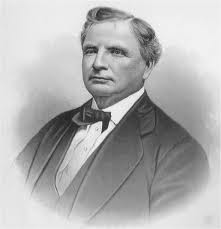 Ludington and Ward were Captains of Industry, both were forces to be reckoned with and they were joined by yet another man who was a giant of the times, Charles Mears. Mears had already managed to secure the removal of the County Seat from its former location on the peninsula to the Village of Lincoln which he controlled.
Ludington and Ward were Captains of Industry, both were forces to be reckoned with and they were joined by yet another man who was a giant of the times, Charles Mears. Mears had already managed to secure the removal of the County Seat from its former location on the peninsula to the Village of Lincoln which he controlled.
The next event of any consequence was the default of Ford in his note with James Ludington who foreclosed and took possession of the properties owned by Ford. Much of the land that Ludington came to own in 1859 encompassed most of what would become known as the City of Ludington.
IN 1859 there was a mill, some shanties and lumber shacks, a sawdust road and very little else. Even the harbor entrance was too shallow and this made it difficult to get the products to market. The little lumbering community that had started to build up around the lake must have intrigued James Ludington, he wanted to build not just a business but a community. In 1859 the little village held the name Pere Marquette after the fallen Jesuit Missionary who had died there centuries before and Ludington had his plans.
There were powerful men with powerful designs on the development of the area, a collision of giants was coming to the wilderness. Once James Ludington took possession of the sawmill at Pere Marquette he needed someone to manage it. He made an offer of a two year lease to Charles Mears to operate the mill in exchange for development of the channel.
Mears jumped at the chance to take control, but it was his biggest mistake as that decision would ultimately lead to his financial and political demise. Over the next couple years Mears had the channel widened and deepened. Schooners could now navigate the channel much easier and the commerce started to flow into Pere Marquette as well as new families and lumbermen. When the lease was up, Ludington took back control of the mill and the new improved harbor.
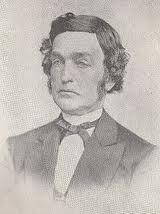 Charles Mears was a Chicago businessman who had built mills at Pentwater in Oceana County, the Village of Lincoln, and at Hamlin in Mason County. He had successfully lobbied and won the vote to have the County Seat of Mason County moved to the Village of Lincoln which he controlled. Mears had the hopes of being able to control every harbor and channel from north of Muskegon to Hamlin. In 1859 the Village of Lincoln was on the move and was out distancing the Village of Pere Marquette in commerce and growth.
Charles Mears was a Chicago businessman who had built mills at Pentwater in Oceana County, the Village of Lincoln, and at Hamlin in Mason County. He had successfully lobbied and won the vote to have the County Seat of Mason County moved to the Village of Lincoln which he controlled. Mears had the hopes of being able to control every harbor and channel from north of Muskegon to Hamlin. In 1859 the Village of Lincoln was on the move and was out distancing the Village of Pere Marquette in commerce and growth.
Mears originally entered all of the lands surrounding the Big and Little Sable Rivers because the land at Pere Marquette was taken by Joseph Boyden and the lands at Freesoil were taken by Wheeler and Harris. By 1860 Charles Mears employed about 500 in his operations, seasonally other men and farmers in the county would also work for Mears in the woods.
In 1859 a group of Manitowoc residents came to Pere Marquette Village aboard the Steamer Gazelle to look into the possibilities of cross lake shipping. The idea of cross lake routes was on the minds of many early in the areas development. There were two ships that serviced the community of Lincoln on a regular basis, The Charles Mears built in 1856 and the Schooner Blackhawk. Growth was slow during the war years of 1861 to 1865 but started to boom shortly there after. Veterans of the Civil War received their 40 acres and many came to Mason County after the war to start a new life. Businesses were built, homes were constructed, and farms established on newly cleared land. In a short time the Village of Lincoln was left holding its hands out as its population declined along with its political influence.
During these years as the drama was unfolding between Mears and Ludington Eber Ward was inching ever closer with the new railroad. It was a much anticipated event, everyone knew that having the railroad coming to the village of Pere Marquette would benefit all.
 When the time came for the Village to have a Post Office the paperwork was filled out with the name of Ludington. The village retained its name but the Post Office was named for James Ludington. In 1865 Ludington started to plat out the layout of the city that would eventually bear his name. Ludington donated funds to promote almost every cause that would improve the social and economic growth of the village.
When the time came for the Village to have a Post Office the paperwork was filled out with the name of Ludington. The village retained its name but the Post Office was named for James Ludington. In 1865 Ludington started to plat out the layout of the city that would eventually bear his name. Ludington donated funds to promote almost every cause that would improve the social and economic growth of the village.
In 1869 James Ludington certainly must have felt that he had the upper hand in the negotiations with Eber Ward over a terminus in Ludington. While he had managed to get the upper hand over Charles Mears he was about to find himself on the same end of the stick that he knocked Mears down with.
The crews of Ludington were cutting what was called a round forty. What that meant is that in the areas where the lands of Ludington and Wards met Ludington's crew was cutting trees down on the wrong side of the property line. Eber Ward probably didn't care for how the negotiations were going with Ludington over a terminus for the railroad and he was not a man that you trifled with.
Ward knew that Ludington's crew was taking some of his lumber and he waited until James Ludington came to Detroit to complete some business. When he arrived he was arrested and jailed.
The result of this action was that James Ludington's health suffered greatly and was now severely impacted by these events and the loss of 650,000.00 from the subsequent lawsuit by Eber Ward against him. Ludington salvaged what he could, Ludington Lumber Company was formed with James Ludington as a stockholder but with the enterprise in control of others that he had previously conducted business with.
The road was wide open now for Eber Ward to secure land for a terminus in Ludington on the Pere Marquette Lake. The newly formed Ludington Lumber Company donated the needed property valued at 100,000.00 to the Railroad. As a bonus Ward secured some of the property for himself and constructed two sawmills on the lake to process the many thousands of acres of pines that he owned.
IN 1873 when the village became chartered Ludington offered to donate 5,000.00 to the city should it be named after him. 1873 was a good year for the most part for Ludington, the city bore his name, it was growing in leaps and bounds, and the railroad was almost here and the County seat was moved from Lincoln to Ludington.
Several years before Michael Engleman had prepared the way for cross lake traffic by establishing his routes to Chicago and Wisconsin and now there was nothing to stop Ward from moving forward in his plans to establish a permanent cross lake link between Michigan and Wisconsin through the railroad. Eber Ward finished his railroad, established his mills at Ludington, and made arrangements to charter the Sidewheel Steamer John Sherman before he passed away January 1st 1875. He did not live to see the creation of the carferry fleet but he played his part and set the stage for the cross lake service that would change the region forever.

